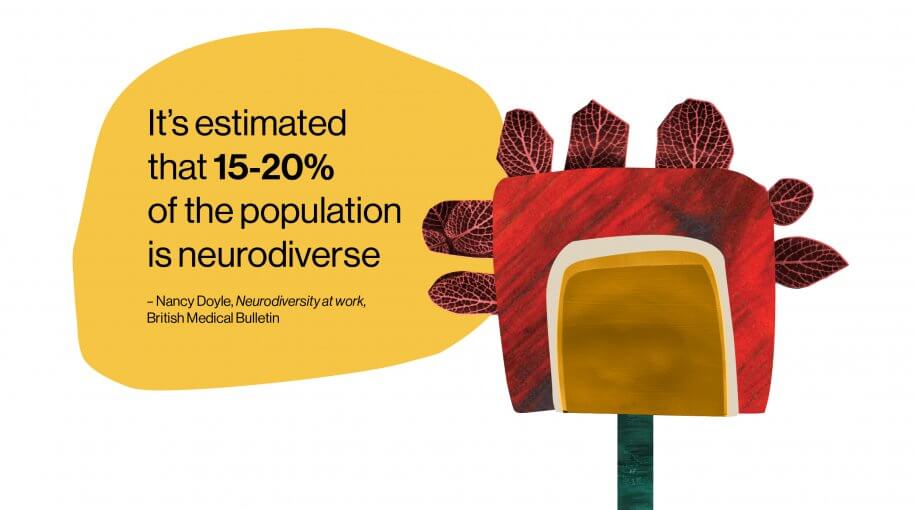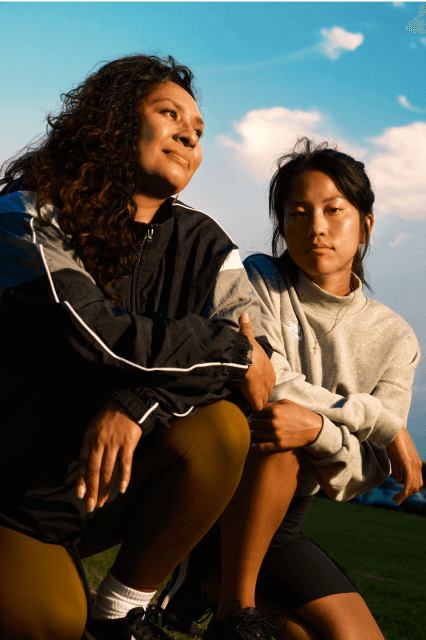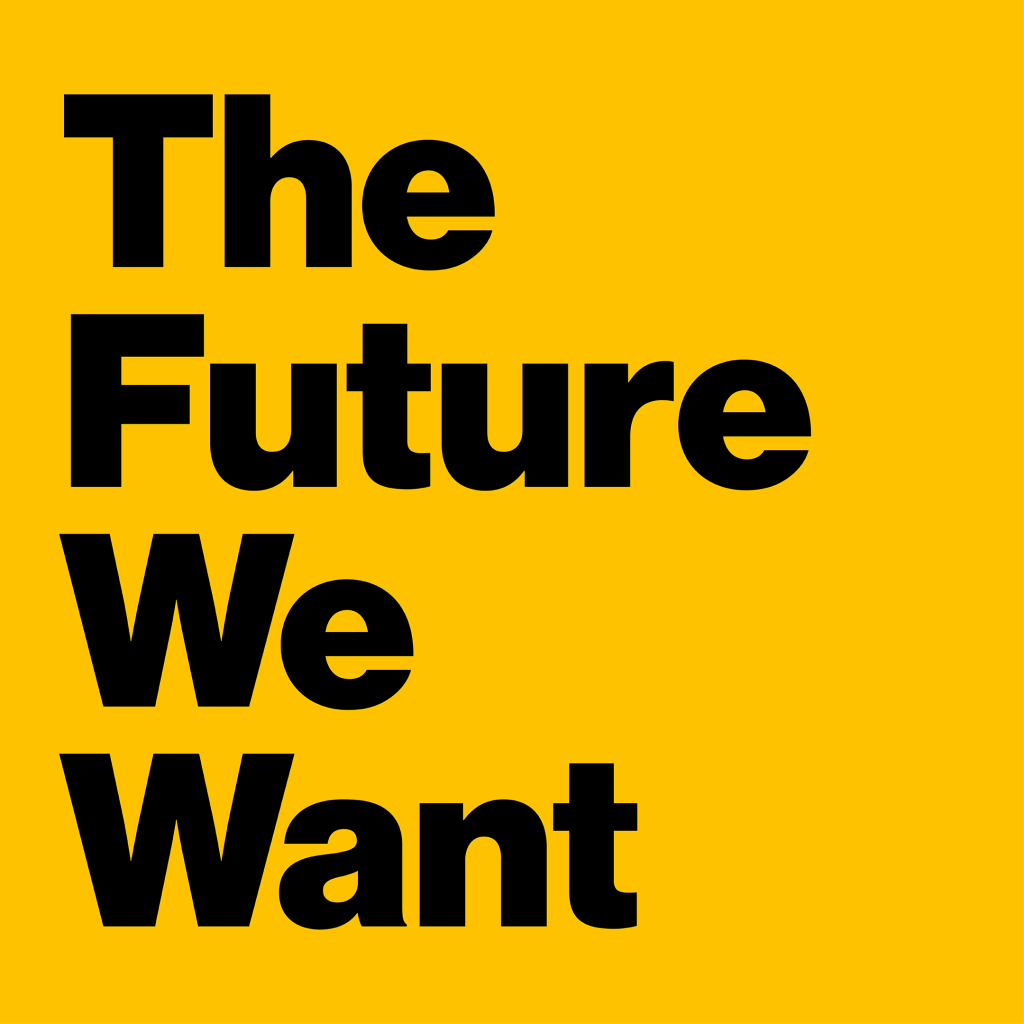Designing with Neurodiversity

For many years, BBMG has been big fans of the team and work at La Casa de Carlota & Friends (LCDC&F), the first design studio that’s home to designers and artists with autism and Down Syndrome. We teamed up recently to explore a theme that we’ve been thinking about at BBMG: as we imagine life beyond the current context of the Covid pandemic, what is the future we want?
Our collaboration broadened our understanding of the role of inclusive design in the world, and the way that neurodiversity can unlock new ideas, reimagine shared stories, and create new possibilities for who we are and what we can be together.
What is neurodiversity?
Coined by the Australian sociologist Judy Singer in the late 90s, neurodiversity is a scientific term that refers to the range of differences in individual brain function and behavioral traits. It’s most commonly used in reference to the autism spectrum but also includes ADHD, dyslexia, dyspraxia synesthesia as well as other learning and developmental difficulties. And it’s estimated that 15-20% of the population is neurodiverse (with many individuals undiagnosed).
Poet, philosopher, and performer, Jazz Cheng who identifies as neurodivergent, defines it as a fact of life. “We all have cognitive differences. Neurodiversity asks us to remove the idea that there is a norm. Learning this language [of autistic frameworks] has helped me own that superhero quality, and understand that this is something that I can work with, and not against,” says Cheng in a discussion panel with Deem Journal.
An emerging creative movement
In recent years, more spaces, products, services, and environments are being designed with diversity and inclusion in mind, opening up experiences to more of the neurodiverse community. Many shopping centers and cultural spaces like museums now have regularly observed quiet hours and provide accommodations like calm spaces to support sensory inclusion. Public spaces like the ‘Restorative Ground’ installation in Hudson Square NYC, are being created to provide a “supportive gathering space for people of all ages, backgrounds, and spectrums of neurodiversity.” The architect designed areas for kids to play to avoid being overstimulated as well as creating focus areas for others to read books. And in digital design, there are defined best practices like sticking to sans serif typefaces that make it easier to differentiate letters and tools and plugins for accessibility like the Recite Me toolbar. Together we are getting better at designing for neurodiversity but we think there’s a bigger opportunity that lies ahead— designing with neurodiversity.

Why is designing with neurodiversity important?
We all think a bit differently, but neurodiverse individuals are born to think differently, as their brains are wired to. Many tend to be lateral and visual thinkers. They have the capacity to think around a problem and come up with more innovative solutions as a result. Throughout history, neurodiverse creatives from Albert Einstein, Andy Warhol, Agatha Christie, Steve Jobs, and David Byrne, (to name a few), have been incredibly influential and successful. Today a more vocal and diverse group of young creatives like Amy Walker, Jen White Johnson, and Cyrée Jarelle Johnson are loudly and proudly telling their stories.
In Creative Differences, a handbook from Universal Music for embracing neurodiversity in creative industries, they say, “Creative thinking requires a ‘toolbox’ of capabilities. A person’s neurodiversity appears to affect the size and contents of that toolbox. Research shows that, for example, individuals with ADHD outperform others when thinking creatively. Autistic traits may put an individual at an advantage when generating ideas. They may not generate as many ideas, but the ideas they generate are truly novel, skipping the obvious and launching straight into the ‘blue sky'”.
If thinking differently is the key to unlocking the new and the fresh, then collaborating with neurodiverse creatives is something we should be doing more of. Inge Nouws, Creative Director at LCDC&F, acknowledges the benefits of inclusive design for the creative industry: “For years nothing relevant and transcendental has happened to the creative industry. The magic of creativity appears when different brains interact. Different points of view and different ways of seeing life and things.”

BBMG’s design team experienced this firsthand when we recently put our heads together with Inge and her team to do a little visioning for post-pandemic life. In a world dominated by social media and design trends, it was refreshing to step away from our computers, collaborate with a new team, and ideate on what we were most excited about for the future. Our favorite idea came from Odile who told us she has felt like a flower in a flowerpot and that this is the season for breaking out of that pot – for new spaces, new growth, new community. We loved imagining ourselves blooming and exploring in the year to come – and we worked together to create a series of art pieces to remind us to continue to reach beyond our little circles, explore the new, embrace the uncertain, and continue to grow with new partners and communities.
An Invitation
This experience inspired us to ask: How might we create better ideas and solutions by designing with, and not just designing for, our neurodiverse peers? How might we strive to work more collaboratively going forward? It’s an invitation that’s transformative not only for individual designers but for the organizations we’re building and leading into the future.
“My hope is that people are valued for their abilities, for their contribution to the world, and not for their disabilities,” Inge explains. “Our process is absolutely the same as any creative studio—with an important difference: there is an exciting group of creatives on the team with whom we have to learn to work just as they learn to work with us. We work with designers, not disabilities.”
At BBMG, we are very much on a journey, learning more about what neurodiversity is, why it matters, and how we can be better allies and design partners. But learning is always the first step and so we’re sharing some resources that we’ve found helpful below.
Looking ahead, embracing inclusive co-creation is an exciting and inspiring way to celebrate neurodiversity and bring more diverse people and thinking to the table. The more we can identify these opportunities and partnerships in our everyday work, the more we can spread the word, challenge misrepresentation, and address underrepresentation in creative fields. At BBMG, we’re looking forward to more opportunities to design with neurodiverse team members and partners to unlock more creativity and impact in a world that needs breakthrough ideas from all of us.
Resources & Sources
Creative Differences Handbook: A guide about how to embrace neurodiversity in creative industries
Designing for Neurodiversity in Digital Design: A guide to web design best practices
Leo: The first dyslexia-friendly e-reader
The Neurodiverse Workplace: Advice on how to ensure workplaces are neuro-friendly
Deem Journal Session Two – Neurodiversity: An online forum examining the concept of neurodiversity and its implications in shaping the conditions for equity


